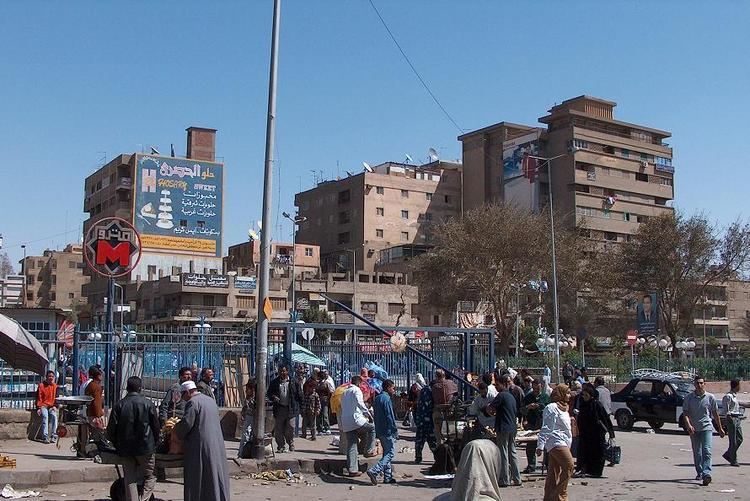Country Egypt Time zone EST (UTC+2) University Helwan University | Local time Thursday 2:19 PM | |
 | ||
Weather 26°C, Wind W at 23 km/h, 27% Humidity | ||
Helwan (Arabic: حلوان Ḥelwān, [ħelˈwæːn]), is a city in Egypt and part of Greater Cairo, on the bank of the Nile, opposite the ruins of Memphis. Originally a southern suburb of Cairo, it served as the capital of the now defunct Helwan Governorate from April 2008 to April 2011, after which it was re-incorporated into the Cairo Governorate. The kism of Helwan had a population of 643,327 at the 2006 population census.
Contents
- Map of Helwan Helwan Sharkeya Qism Helwan Cairo Governorate Egypt
- History
- Ecclesiastical history
- Titular see
- Administrative divisions
- Economy
- Climate
- Notability
- References
Map of Helwan, Helwan Sharkeya, Qism Helwan, Cairo Governorate, Egypt
History
The Helwan and Isnian cultures of the late epipaleolithic, and their Ouchata retouch methods for creating microlithic tools are help to have led to the development of the Harifian cultural assemblage of the Sinai, which may have introduced Proto-Semitic languages into the Middle East.
Around 3000 to 2600 BC there was a cemetery near Helwan serving the city of Memphis.
The Khedivial Astronomical Observatory was built here 1903-1904, and was used to observe Halley's comet. Egypt's oldest and largest private psychiatric clinic, the Behman Hospital, was also constructed here in 1939.
During the early part of the 20th century, the city was the site of RAF Helwan, a major British airfield, which was later used by the Egyptian Air Force.
In 1959 Helwan was chosen to serve as a site of a major industrial city, as part of President Gamal Abdel Nasser's attempts to industrialize Egypt. Throughout the 1960s it developed into a massive steel works zone, with numerous automobile factories being built. The site continues to use electricity from the Aswan Dam and iron ore from Egypt's western deserts. Helwan was gradually transformed into a mass suburb of Cairo for the working class.
In April 2008, the Helwan Governorate was split from the Cairo Governorate. It encompassed most of the suburbs, new compounds and villages located in the southern part of Cairo. The city of Helwan became the capital of the new governorate. Following the dissolution of the Helwan Governorate in April 2011, the city of Helwan was reincorporated into the Cairo Governorate.
Ecclesiastical history
Alphocranon was important enough in the Late Roman province of Arcadia Aegypti to be a suffragan of its Metropolitan Archbishop of Oxyrhynchus.
It's bishop Harpocration participated in the First Council of Nicaea in 325. The bishopric is mentioned in two Notitiae Episcopatuum.
Titular see
No longer a residential diocese, Alphocranon is today listed by the Catholic Church as a Latin Catholic titular bishopric, nominally restoring the diocese since 1933, but no incumbent is recorded.
Administrative divisions
The now defunct Helwan Governorate encompassed the following cities or districts: Maadi, Helwan, 15th of May, El Shorouk, New Cairo, Madinaty.
The city of Helwan itself includes districts such as Wadi Hof, Hadayek Helwan, and Maasara.
Economy
Local industry includes iron, steel, textiles and cement. The area has hot sulphur springs, an astronomical observatory, the Helwan University and a burial chamber (discovered in 1946). It is the terminus of Cairo's light rail Metro Line 1. Also trams in Helwan serve the people.
Climate
Köppen-Geiger climate classification system classifies its climate as hot desert (BWh). Owing to its proximity to Cairo, its average monthly temperatures are quite similar, but it has a quite different distribution of humidity and its diurnal average temperature variation is slightly larger.
